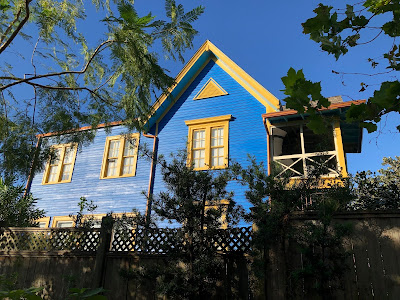REVIEW OF
THE MOXY EAST VILLAGE
I stayed
five nights for an incredibly low price at the Moxy East Village Hotel in New
York.
It’s at a perfect
location near Union Square transit + East Village/Lower East side dining,
shopping and vibe.
I slept soundly
in a super quiet room.
I can't
believe the punk rock-themed hotel -- with a popular rooftop bar and loud music
at a nightclub and outdoor dining venue on same block immediately next to
property -- was so tranquil and sound proofed. Bravo.
Room small,
but I only needed it for sleep.
Bed was
super comfortable.
Had blackout
drapes but I enjoyed wall of windows on NYC so much, I left the blinds
up.
Shower is great.
No flooding.
Sink vanity featured
lots of room for storage.
I love the
pegs on the wall -- I stored a dozen things on them.
Plus, there
is under bed storage and locker-like storage above the flat screen TV.
The staff
great and the rooftop was a cool amenity for a June visit.
The restaurant
looked amazing, but didn't eat at it.
The little
outdoor space on main level was super chill and great for summer.
Great room
design -- everything I needed in less than 200 SF.
The free
breakfast in the hip, rock n roll space off the lobby service is great.
I know it is
difficult, especially with packaging boxes for the masses, but I wish there
were a few more healthy breakfast options -- granola, cereal, more fresh
fruit.
I used to
free mini fridge that I requested for storing berries, oat milk, cereal to have
healthier options.
Wish
wheelchair users didn't have to use an elevator every time they go from street
to lobby.
It's good
that there is an elevator, but it sucks that in a brand-new building, people
with disabilities are segregated from the majority using the steps - and
vulnerable if the equipment breaks down.
The safe was
not big enough to store my expensive camera. Gotta fix that.
Overall, a
grade of A…and I’m hard to please.



































